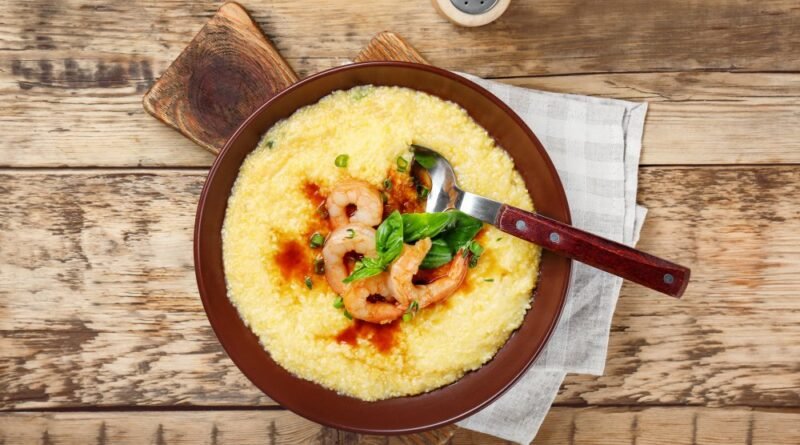Stone Ground Grits: A Southern Culinary Tradition
Stone Ground Grits: A Southern Culinary Tradition
Stone ground grits are more than just a food—they are a symbol of Southern culture and history. This humble, hearty dish has been a staple of the American South for centuries, providing sustenance to generations of families. Unlike the more processed, instant versions often found in supermarkets, stone ground grits are celebrated for their texture, flavor, and authenticity.
What Are Grits?
At their core, grits are made from ground corn, specifically hominy or dent corn. The corn kernels are dried, hulled, and then coarsely ground.However, the two dishes differ in texture, flavor, and preparation methods, with grits tending to be softer and creamier.
What Are Stone Ground Grits?
Stone ground grits are a traditional preparation method that uses a stone mill to grind the corn. This ancient method of milling preserves more of the corn’s natural nutrients, oils, and flavors, as the process is slower and less aggressive than industrial milling.
This not only makes them more nutritious, but it also gives them a more complex, earthy flavor and a texture that is coarser and more substantial than instant or quick grits.
History and Cultural Significance of Stone Ground Grits
The history of grits dates back to Native American tribes, particularly the Muskogee people who were among the first to prepare dried corn in a ground form, which would eventually evolve into what we know as grits. When European settlers arrived in the Americas, they adopted this method of preparing corn, and over time, it became a dietary staple in the Southern colonies.
During the 19th century, grits were a fundamental part of the Southern diet, especially for those living in rural areas. As agriculture grew, grits became a ubiquitous part of Southern meals, often served for breakfast, lunch, or dinner.
Today, stone ground grits are a link to Southern culinary heritage.
How Are Stone Ground Grits Made?
The process of making stone ground grits begins with selecting high-quality corn.This slow grinding process generates minimal heat, which helps to preserve the natural oils and nutrients in the corn.Once ground, the grits are sifted to remove any fine dust or excess bran. What remains are coarsely ground pieces of corn that will later be cooked to make grits.
Cooking Stone Ground Grits
One of the key differences between stone ground grits and their instant or quick-cooking counterparts is the amount of time and care needed to prepare them. Stone ground grits require a longer cooking time, often simmering for 45 minutes to an hour, but the result is worth the effort. Here’s a simple guide to cooking them:
Ingredients:
- 1 cup of stone ground grits
- 4 cups of water or broth (chicken or vegetable broth adds extra flavor)
- 1 teaspoon of salt
- Butter or cream (optional for richness)
- Cheese, shrimp, or other toppings (optional)
Instructions:
- Start by bringing water or broth to a boil in a large pot.
- Slowly stir in the stone ground grits, whisking constantly to prevent clumping.
- Reduce the heat to low and allow the grits to simmer. Stir frequently to ensure they don’t stick to the bottom of the pot.
- After about 30-45 minutes, the grits should be creamy and tender. If they become too thick, you can add more liquid, a little at a time, to reach your desired consistency.
- Once the grits are done, you can stir in butter, cream, or cheese for extra richness and flavor.
- Serve hot, with toppings such as sautéed shrimp, crumbled bacon, or simply a pat of butter and a dash of pepper.
Stone ground grits are incredibly versatile, and you can adapt them to be sweet or savory depending on your preferences.
Health Benefits of Stone Ground Grits
In addition to their rich flavor and satisfying texture, stone ground grits offer several health benefits.This includes fiber, which aids digestion, and B vitamins such as niacin, which supports energy metabolism and skin health.Furthermore, stone ground grits are naturally gluten-free, making them an excellent option for people with celiac disease or gluten sensitivities.
Preserving Tradition: The Future of Stone Ground Grits
Many small mills across the Southern United States continue to produce stone ground grits, preserving the history and heritage of this iconic food.
Whether served alongside seared scallops or paired with smoked pork, stone ground grits continue to evolve while maintaining their connection to the Southern culinary tradition.
Conclusion
Stone ground grits are a testament to the power of traditional foods and the lasting influence of Southern culture. Their rich history, nutritional benefits, and deep flavor make them a beloved dish that transcends generations. Whether enjoyed in their simplest form or elevated with gourmet ingredients, stone ground grits remain a delicious and comforting reminder of the South’s agricultural roots and culinary creativity.
